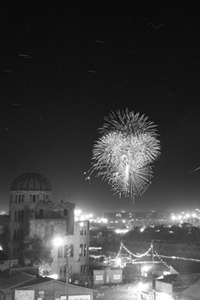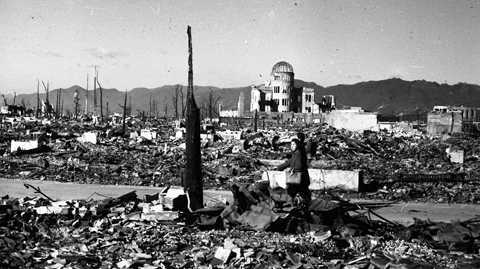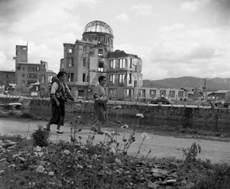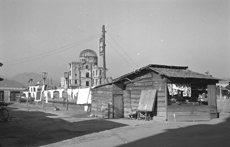Hiroshima—Witnessed by the A-bomb Dome
Ever since he was little, Sasaki had been especially attached to the beautiful Hiroshima Prefectural Industrial Promotion Hall. “The building stands, exposing its pitiful condition caused by the A-bombing. It looks like it's weeping, but at the same time looks angry. It also seems to be saying something to me.” (Yuichiro Sasaki, “Hiroshima Since August 1945,” Asahi Shimbun Company) The A-bomb Dome has witnessed the post-war period of Hiroshima. Sasaki may have identified himself with the dome.

Fireworks
1955
Motoyasugawa River
Fireworks were a feature of the “Hiroshima River Festival,” which was initiated in 1952. Coinciding with the festival, a concert was held on the water.
 |
In the vicinity of the hypocenter1945 Saiku-machi (now, Ote-machi 1-chome)East of the A-bomb Dome, houses and shops were reduced to mere ruins by the blast and fires.
Children in Sarugaku-cho1950
In Sarugaku-cho, which had been annihilated by the A-bombing, houses were rebuilt and children started to come back to the alleys.
|

Washing clothes in the river1948
Two women carrying washtubs walk along the west bank of the Motoyasugawa River. In those days, washing clothes in the river was commonplace.
|

